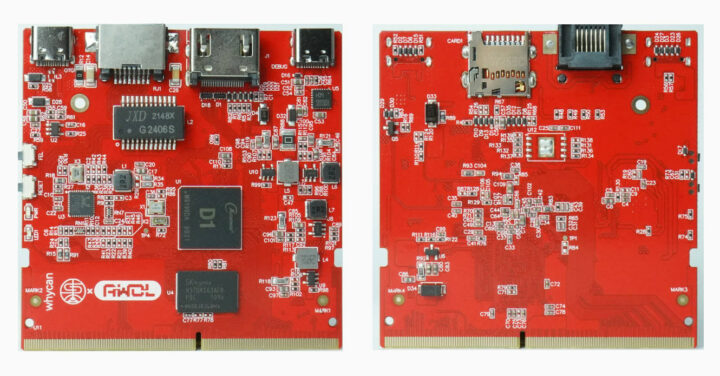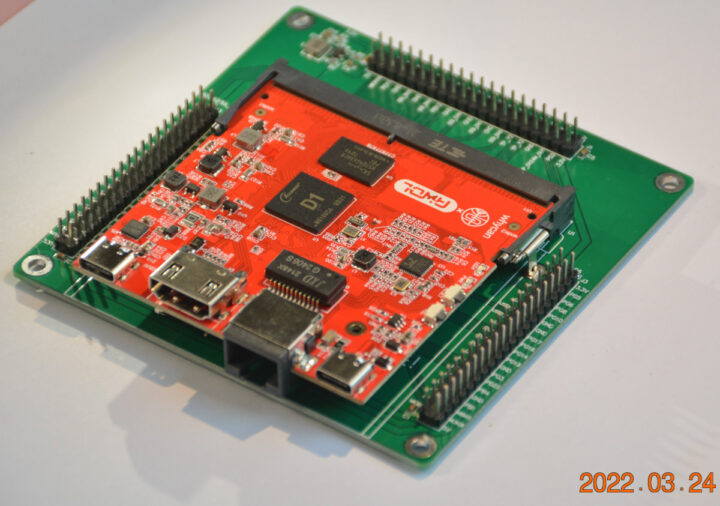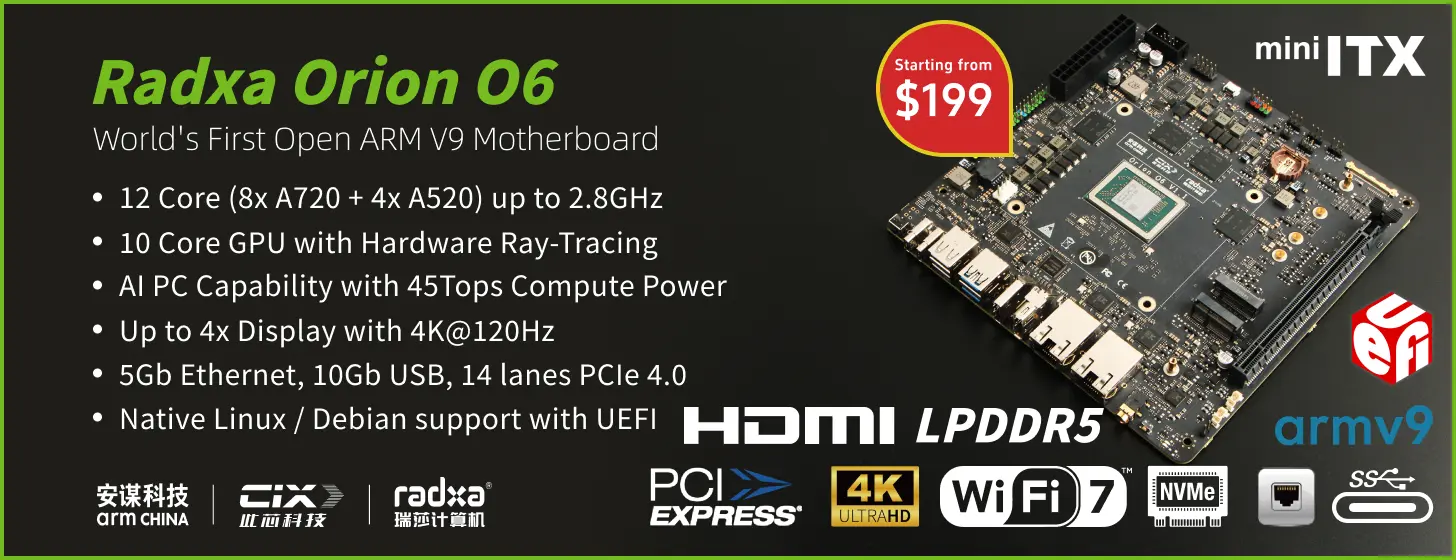Dongshan Nezha STU is a development kit comprised of an Allwinner D1 RISC-V system-on-module (SoM) and a carrier board with three 40-pin headers to access I/Os from the RISC-V processor.
While not quite as compact as the Sipeed LicheeRV module, the “Dongshan Nezha STU Core” module also doubles as a standalone single board computer (SBC) with USB-C, Ethernet and HDMI ports, plus a MicroSD card socket for the firmware, which reminds me of the Khadas Edge design.
Dongshan Nezha STU specifications:
- Nezha STU Core SoM
- SoC – Allwinner D1 single-core XuanTie C906 64-bit RISC-V processor @ 1.0 GHz with HiFi4 DSP, G2D 2D graphics accelerators
- Memory – 512MB DDR3 memory (option up to 2GB – TBC)
- Storage – MicroSD card slot, 2Gbit serial NAND flash (MX35LF1GE4AB); Note the SPI NAND flash (U12) is not populated in the photo below.
- Video – HDMI port up to 1080p60
- Networking – Low-profile Gigabit Ethernet RJ45 port
- USB – 1x USB Type-C OTG port, 1x USB Type-C port for debugging via CP2104
- Host connector – 260-pin SO-DIMM edge connector with all I/Os
- Misc – Power and user LEDs, Reset and FEL buttons
- Power Supply – 5V via USB-C OTG port
- Dimensions – TBD
- Carrier board
- Expansion – 3x 40-pin header for GPIOs (3.3V)
- Supply voltage – 5V
- Dimensions – TBD
The specifications are preliminary as I deducted those from the photos and schematics. The carrier board is more like a daughterboard or breakout board since it has no power of its own and only exposes extra I/Os to 2.54mm pitch headers.
 The Allwinner D1 SoM and board will support the Tina SDK (OpenWrt based) as well as buildroot, and share the same software support as the upcoming, Raspberry Pi Zero-inspired, Nezha MQ Pro SBC. Technical details and development resources can be found on the documentation website, but only in Chinese at the time of writing. English is being worked on, but switching language currently shows error 404.
The Allwinner D1 SoM and board will support the Tina SDK (OpenWrt based) as well as buildroot, and share the same software support as the upcoming, Raspberry Pi Zero-inspired, Nezha MQ Pro SBC. Technical details and development resources can be found on the documentation website, but only in Chinese at the time of writing. English is being worked on, but switching language currently shows error 404.
Dongshan Nezha STU devkit is sold for $38, or just $32 for the Core module only, on AnalogLamb.

Jean-Luc started CNX Software in 2010 as a part-time endeavor, before quitting his job as a software engineering manager, and starting to write daily news, and reviews full time later in 2011.
Support CNX Software! Donate via cryptocurrencies, become a Patron on Patreon, or purchase goods on Amazon or Aliexpress






One thing I fail to understan in many cases is why even bother with edge connector, if they are going to include regular connectors as well?
At 22€ (european vat. included), I was already buying it….. just to be stopped at the €12,78 shipping cost ! 🙁